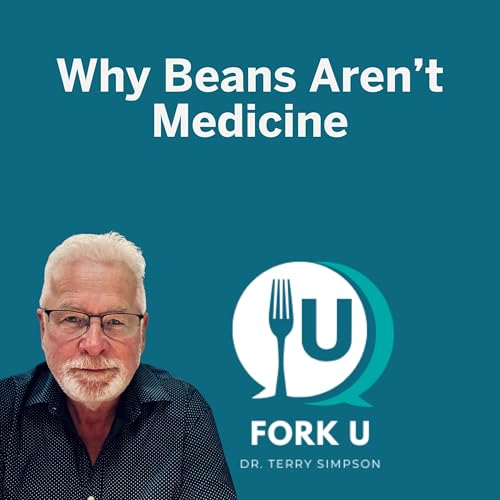
Why Beans Aren’t Medicine
No se pudo agregar al carrito
Add to Cart failed.
Error al Agregar a Lista de Deseos.
Error al eliminar de la lista de deseos.
Error al añadir a tu biblioteca
Error al seguir el podcast
Error al dejar de seguir el podcast
-
Narrado por:
-
De:
Food shapes our health. Eating beans, fruits, vegetables, and whole grains can lower the risk of diabetes and other chronic conditions. Yet food does not replace medicine. Clearly, diets high in ultra-processed foods make diabetes worse. And yes, eating better is the most empowering thing anyone can do.
Still, some claim that modern food is the only reason we have chronic diseases like diabetes. They argue that if people only ate “real food,” there would be no need for medicine. History proves otherwise.
The Story That Changed Everything: Dr. Banting and InsulinIn the early 1920s, Dr. Frederick Banting and Charles Best discovered insulin in Toronto. At the time, children with type 1 diabetes had no future. Families were told to put their kids on starvation diets, hoping to add a few months to their lives. Death was certain.
Then came insulin. Doctors injected it into children already in comas. One by one, they woke up. They sat up, asked for food, and hugged their parents. What had been a hospital ward of silence turned into a place of joy.
Insulin was the fastest-adopted drug in history. Banting became the youngest Nobel Prize winner at the time. That discovery did not come from food. It came from science and medicine.
There are two main types of diabetes.
- Type 1 diabetes happens when the pancreas loses all ability to make insulin. Without insulin, sugar cannot move into cells, and life cannot continue. That is why every person with type 1 diabetes needs insulin from the first day of diagnosis.
- Type 2 diabetes is different. In this case, the body still makes insulin, but the cells resist it. Over time, the pancreas wears out. That is why many people with type 2 eventually need insulin too. It is not failure. It is simply how the disease progresses.
Food can help manage both types, but food alone is never enough.
Beans are one of the best foods for blood sugar. They are full of soluble fiber, which slows down glucose absorption. They also provide plant protein and have a low glycemic index. That means they don’t spike blood sugar the way soda or white bread does.
Research shows that eating beans regularly can lower hemoglobin A1c — the measure of long-term blood sugar — by about 0.3 to 0.5 percent. That is a real effect from food.
Beans are also practical. They are inexpensive, found almost everywhere, and have been eaten by humans longer than almost any other protein source.
Now let’s compare beans to metformin.
Metformin is the first-line drug for type 2 diabetes. It lowers A1c by 1 to 2 percent. That’s two to four times more than beans. Metformin also lowers the risk of heart disease and has decades of safety data behind it.
So while beans help, they are not metformin. If blood sugar is high, no amount of hummus or chili will bring it back to safe levels. Medicine is needed. Food lays the foundation, but medicine does the heavy lifting.
When it comes to diet, the evidence is clear. The Mediterranean diet is the best overall eating plan for diabetes.
This diet includes:
- Fruits
- Vegetables
- Olive oil
- Nuts
- Legumes (yes, beans!)
- Whole grains
Now, some people push back against whole grains. That may be because they grew up in the low-carb era, when grains were unfairly blamed for every health problem. But whole grains are healthy, especially for people with diabetes. They are far better for the body than bacon or butter.
The Mediterranean...



